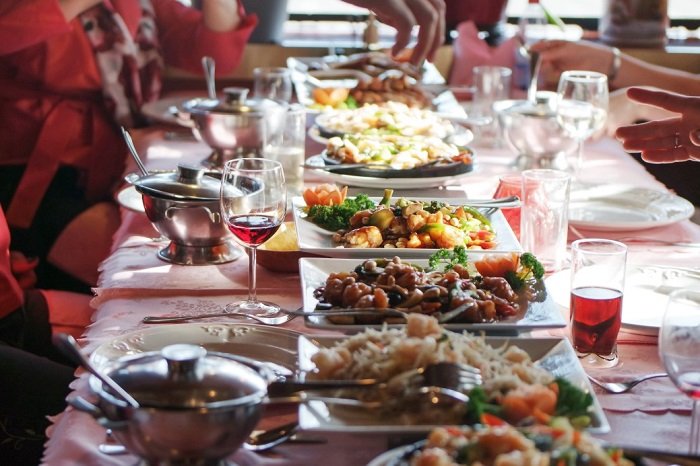
Hark! The holidays are here–full of family, friends, fun and fattening food. Try some of these mealtime tactics to help you stay in control of your daily diet.
- Drink a full glass of water or a cup of bouillon before each meal to help take the edge off your appetite. If you prefer, indulge in a few low-calorie raw vegetables and you’ll be less inclined to overeat.
- Set a pretty table to make each meal–even the low calorie meals–a special occasion. Place mats make the biggest difference. Stock up on inexpensive but beautifully designed paper place mats and napkins in a variety of pretty colors and patterns.
- Pass up a large dinner plate in favor of a smaller luncheon or salad plate for all meals. Served on a smaller plate, smaller portions of food look larger and more satisfying.
- Serve up plates in the kitchen directly from pans on the stove. Take only your plate to the table. Without serving bowls full of food you’ll be less tempted to have a second helping and have fewer dishes to wash. You might also serve food in separate courses or separate small dishes.
- If you are entertaining, keep busy by filling everyone else’s plate, leaving you less time to eat.
- Make the food on your plate look as attractive and appetizing as possible. Garnishes of parsley or watercress, orange, apple or radish slices are colorful and fill the plate to make the amount of food look like more than it really is.
- Don’t eat and read or watch television. For that matter, don’t eat while you’re doing anything else–ironing, talking on the telephone, etc. Calories will add up before you know it. Concentrate on what you’re eating, on the size and pleasure of each bite.
- Eat the salad before the rest of your meal. You’ll be less hungry for the food that follows.
- Sip on a low-calorie beverage between bites. Sip, don’t gulp.
- Eat slowly–very slowly–and savor every bite. Slowing down will make you more aware of what you’re eating, increase your pleasure, increase your control over food choices, aid digestion and signal your brain when your stomach is full and blood sugar level is up.
- Cut up your food, one small piece at a time. Cutting everything at once speeds your eating time.
- Put your knife and fork down on your plate between bites. People who eat with their utensils in their hand have a habit of eating more rapidly.
- Chew each bite at least 10 times before swallowing.
- Wipe your mouth lightly with your napkin between bites.
- Don’t save the best item for last. You may find yourself eating other food quickly in order to get to it.
- Finish each meal with something sweet. There’s a psychological satisfaction to ending a meal with a sweet taste. It doesn’t have to be a traditional dessert. Fruit or an after-dinner mint will do. Whatever it is, make it small.
- After a meal, remove any food from the table immediately. Whenever possible, ask someone else to scrape the leftovers so you won’t be tempted to eat that last spoonful of whatever looks good.
- Wrap up and give leftovers to departing guests. Guests may appreciate your thoughtfulness and you won’t have the leftovers around to snack on.
- Don’t hang around the kitchen. It’s too tempting to nibble.
